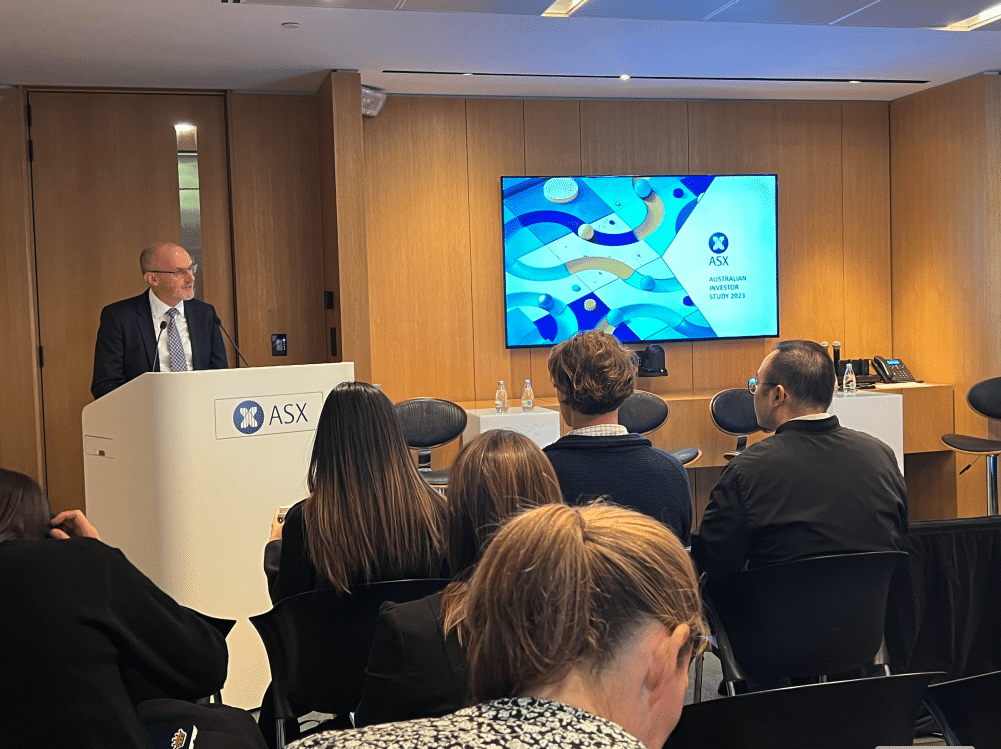Australia has witnessed a significant increase in the number of women entering the investment market, surpassing previous records, according to ASX’s latest investor study, out today.
Despite male investors still outnumbering women, more Australian women than ever before are investing beyond their primary residence and superannuation.
Of the net 1.2 million investors who joined the market after 2020, half were women, according to the ASX research. This rise is particularly notable among the next generation, with the percentage of female investors increasing from 9 per cent in 2020 to 11 per cent in 2023, marking a positive shift toward gender parity in investing.
The ASX Australian Investor Study provides an authoritative guide on the evolution of investment markets and changing investor behaviour and is based on research conducted on behalf of ASX from an in-depth survey of a nationally representative sample of 5,519 Australian adults conducted in November 2022.
ASX Managing Director & CEO Helen Lofthouse became the first female chief at ASX when she was appointed in August 2022 and has highlighted the next wave of investors, many of them women, and the rise of the younger tech-savvy investor.
“These valuable insights help us understand how investor attitudes are changing and will guide us on how we develop the market in the future,” Lofthouse says.

Addressing investment disparity
While progress has been made, there are still gaps to close in achieving gender parity. Male investors continue to maintain larger portfolios, with an average balance of $667,000 compared to $413,000 for women. Additionally, 31 per cent of female investors have balances below $50,000, compared to 21 per cent of male investors. These disparities are complex, with income levels and investment types contributing to the asset gap.
Differences in investment allocation
Male investors tend to hold higher levels of growth assets compared to their female counterparts. For instance, 63 per cent of men hold Australian shares, while only 54 per cent of women do. Similarly, 21 per cent of men invest in international shares, while only 11 per cent of women do. The discrepancy extends to ETFs, with 27 per cent of men investing in them compared to 13 per cent of women. This imbalance may result in female investors having less exposure to diverse investment opportunities. The only investment type where women hold higher holdings than men is term deposits, which are low risk but offer correspondingly low returns.
Risk aversion and response to market volatility
Female investors tend to be more risk-averse than their male counterparts. The study shows that 55 per cent of women prefer stable and reliable returns over higher-risk investments, while only 40 per cent of men share this preference. When faced with a scenario where their portfolio balances fell by 20 per cent, 47 per cent of female investors expressed concern but chose to wait for improvements, compared to 33 per cent of males.
Additionally, only 6 per cent of females would seize the opportunity to invest more, whereas 9 per cent of males would.
Challenges of trust and knowledge
Female investors identified trust and a lack of knowledge as major challenges when investing. A higher proportion of women find it difficult to determine trustworthy information sources (38 per cent compared to 31 per cent of men) and providers acting in their best interests (28 per cent versus 17 per cent). Selecting the right investments is also a challenge for 30 per cent of women compared to 20 per cent of men. While both genders face challenges related to diversification, women express slightly less trust in financial institutions overall, except for financial planners and advisors.
Barriers preventing female participation
Among Australians who have never invested before, 64% are female. More women than men cite the inability to afford investing as a reason (45 per cent compared to 39 per cent). This can be attributed to the significant wage gap between men and women, with Australian women earning an average of 25 per cent less than their male counterparts. Lack of confidence is another factor that prevents more women from investing, with 30 per cent of females expressing a lack of confidence compared to 21 per cent of males. Uncertainty about finding reliable information also plays a role, with 20 per cent of females struggling to locate the right sources compared to 15 per cent of males.
Empowering women investors
To promote gender parity in investing, it is crucial to address the challenges faced by female investors. ASX CEO Helen Lofthouse emphasizes the importance of educational resources for investors, stating, “As the number of new investors continues to grow year on year, it’s important for investors to have educational resources available to assist in their investment journey.” Empowering women with knowledge, building trust in financial institutions, and bridging the income gap are key steps towards achieving gender parity in the Australian investment landscape.
Foundations set for future
Despite the challenges of recent years, ASX believes its Australian Investor Study shows that the Australian investment market continues to thrive with a significant influx of new investors, including a growing number of young women. While interest rates and the cost of living pressures continue to impact households, exchange-traded funds (ETFs) have emerged as a relatively affordable entry point for investors. And, while environmental, social, and governance (ESG) considerations may have taken a backseat to managing living costs, there is a growing awareness of ESG principles among investors.
The increasing participation of women in the investment market is a positive development that underscores the solid foundations established in Australia. It reflects progress towards fostering a more inclusive and diverse investment landscape. However, it is important to acknowledge that there are still areas for improvement. By actively addressing the remaining gaps and striving for greater gender parity, we can cultivate an environment that offers equal opportunities for all investors. This commitment will contribute to a more equitable and prosperous future, where individuals from all backgrounds can thrive in the realm of investing.


